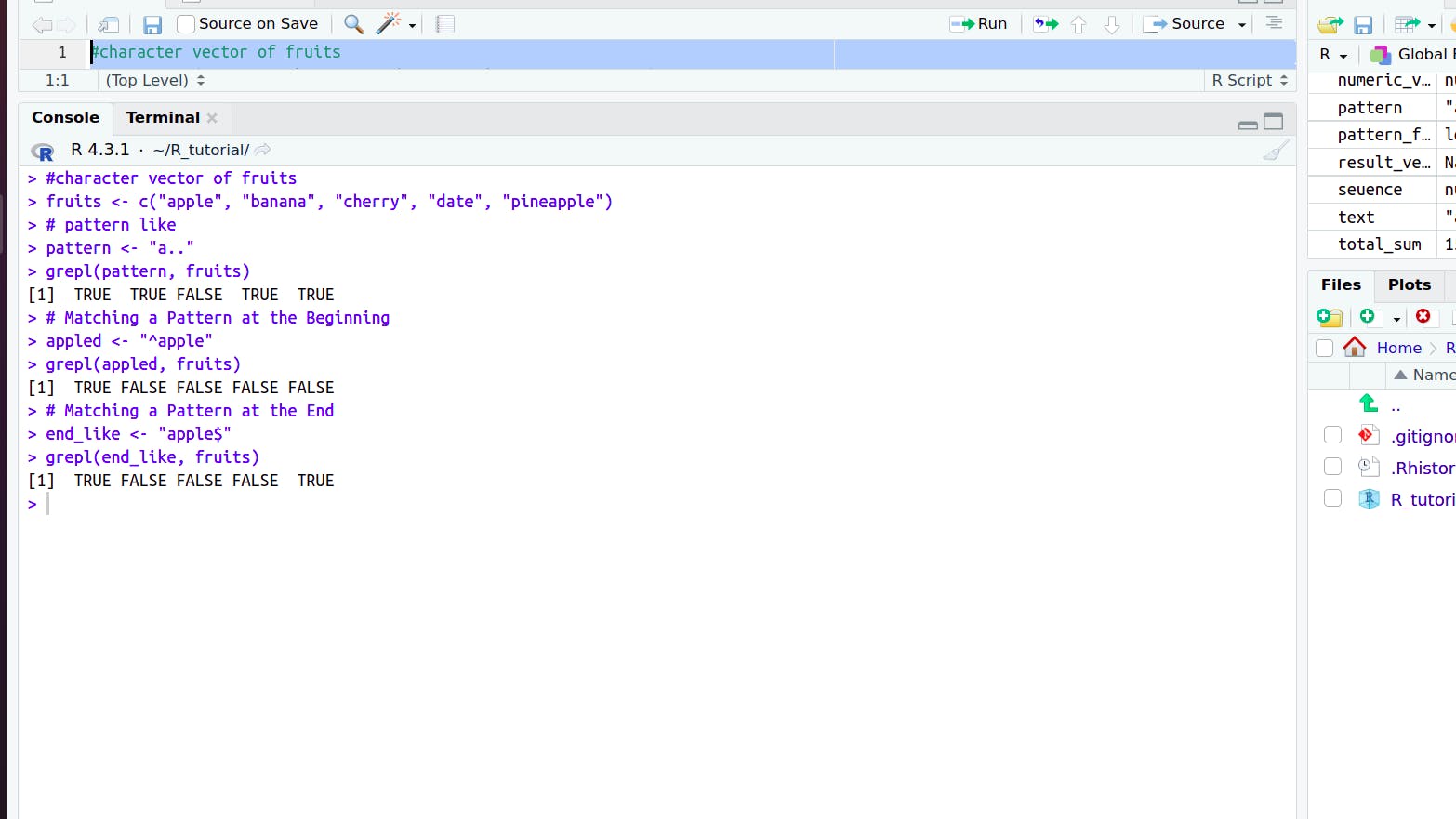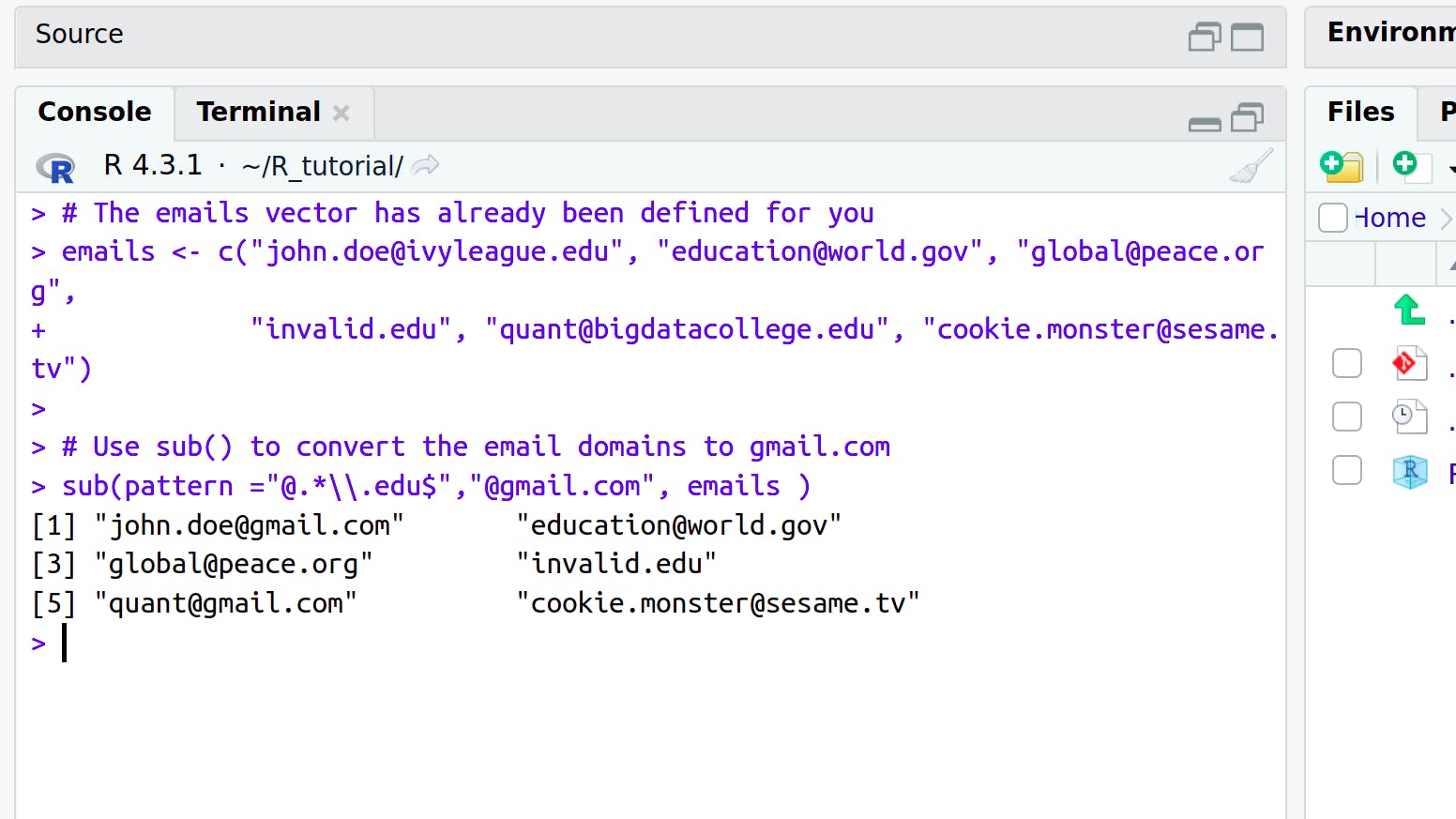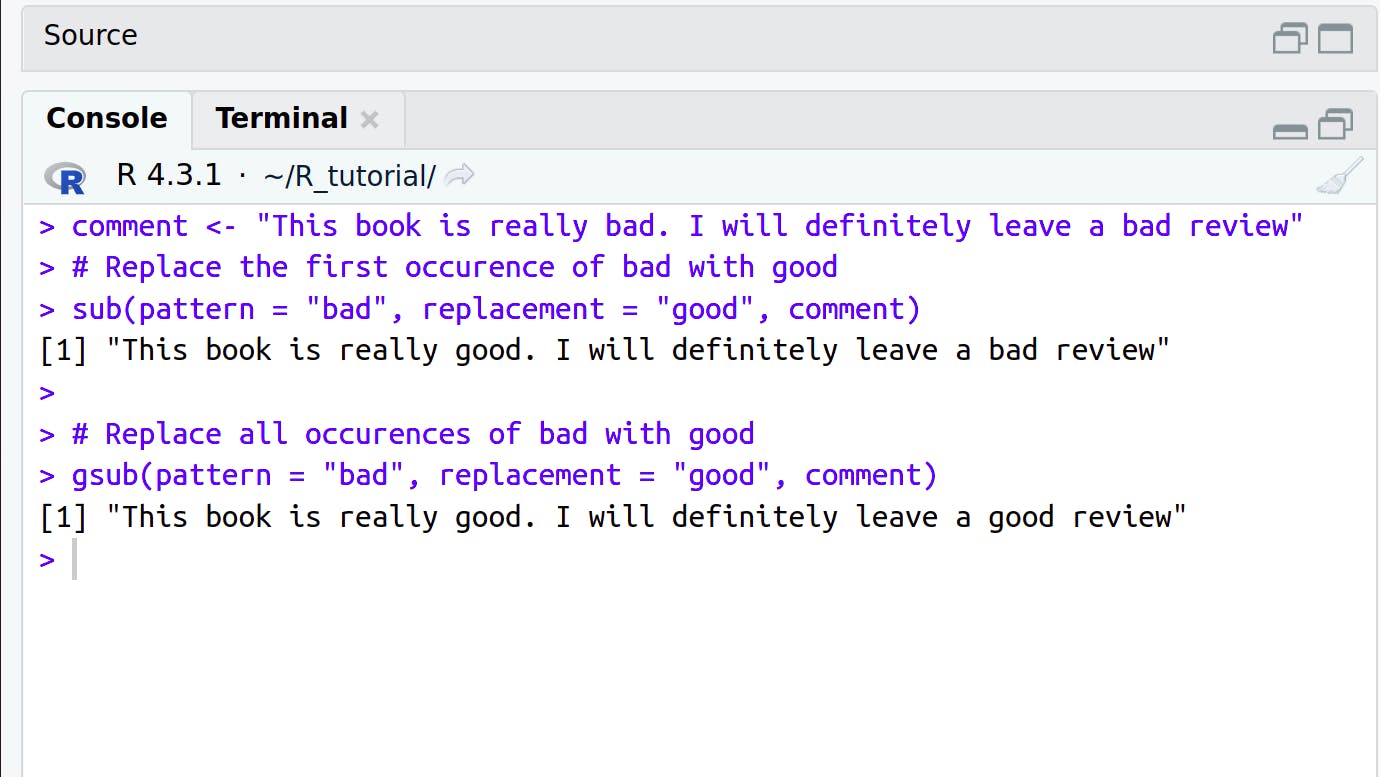Regular expressions
Sequence of (meta) characters.
used for pattern matching or string matching
Uses:
Data extraction
Cleaning
Data analysis
Data validation
Text mining
parsing
| [abc] | a,b,c | |
| [^abc] | any character except a, b, c | |
| [a- z] | a to z | |
| [A - Z] | A to Z | |
| [a -z A- Z] | a to z, A to Z | |
| [0 - 9] | 0 to 9 | |
| [ ]? | occurs 0 or 1 time | |
| [ ]+ | Occurs 1 or more times | |
| [ ] * | occurs 0 or more times | |
| [ ]{n} | occurs n times | |
| [ ]{n, } | occurs n or more times | |
| [ ]{y, z} | occurs at least y times but less than z times | |
[:alnum:] | any alphanumeric character | |
[:digit:] | any numeric digit | |
[:alpha:] | any letter (upper or lowercase) | |
[:upper:] | any uppercase letter | |
[:lower:] | any lowercase letter |
Regex Metacharacters
| \d | [0 - 9] | |
| \D | [^0 - 9] | |
| \w | [a - z A - z 0 -9] | |
| \W | [^\w] | |
"\\s" | a single space | |
^ | Anchors the pattern to the beginning of a string. | |
$ | Anchors the pattern to the end of a string. | |
| * | Any character that is matched zero or more times |
grepl()
Searches for a pattern within a character vector or list of character strings.
Stands for "global regular expression pattern matching with logical return."
Returns logical vector indicating whether a match was found for the pattern.
Syntax:
grepl(pattern, x, ignore.case = FALSE, perl = FALSE, fixed = FALSE, useBytes = FALSE)
pattern regular expression pattern you want to search
x the character vector or string which you want to search for the pattern
ignore.case ` optional legacy argument that specifies whether the pattern matching should be case_insensitive (TRUE)
- The \1 in the replacement argument of sub() gets set to the string that is captured by the regular expression [0-9]+.
Example


grep()
Returns a numeric vector of indices (positions) where the pattern is found in the input vector. It returns the position of the elements that match the pattern.
Syntax
grep(pattern, x, ignore.case = FALSE, perl = FALSE, fixed = FALSE, useBytes = FALSE)

sub()
The function is used for pattern substitution within character strings.
It replaces the first occurrence of a specified pattern (regular expression) in a character vector with a replacement string and returns the modified character vector.
syntax
sub(pattern, replacement, x, ignore.case = FALSE, perl = FALSE, fixed = FALSE)
pattern regular expression pattern you want to search
replacement This is the string that will replace the first occurrence of the pattern in each element ox x
x the character vector or string which you want to search for the pattern
ignore.case ` optional legacy argument that specifies whether the pattern matching should be case_insensitive (TRUE)
perl: An optional logical argument that indicates whether the pattern should be treated as a Perl-compatible regular expression (TRUE) or a basic regular expression (FALSE, the default).fixed: An optional logical argument that specifies whetherpatternshould be treated as a fixed string (TRUE) or as a regular expression (FALSE, the default).
Note: If you want to replace all occurrences, you can use the gsub() function.

regexpr()
is used to find the starting position of a specified pattern (regular expression) within a character vector or a list of character strings.
If no match is found, it returns -1.
Syntax
regexpr(pattern, text, ignore.case = FALSE, perl = FALSE, fixed = FALSE)
pattern: This is the regular expression pattern you want to search for within the character vectortext.text: This is the character vector or list of character strings in which you want to find the pattern.ignore.case: An optional logical argument that specifies whether the pattern matching should be case-insensitive (TRUE) or case-sensitive (FALSE, the default).perl: An optional logical argument that indicates whether the pattern should be treated as a Perl-compatible regular expression (TRUE) or a basic regular expression (FALSE, the default).fixed: An optional logical argument that specifies whetherpatternshould be treated as a fixed string (TRUE) or as a regular expression (FALSE, the default).
regexpr()is useful when you specifically need to know the starting position of the first occurrence of a pattern within each string intext.Note: If you want to find the positions of all occurrences of the pattern within each element, you can use the
grep()orgregexpr()function, which returns positions for multiple matches.Example

Further Reading
https://bookdown.org/rdpeng/RProgDA/text-processing-and-regular-expressions.html